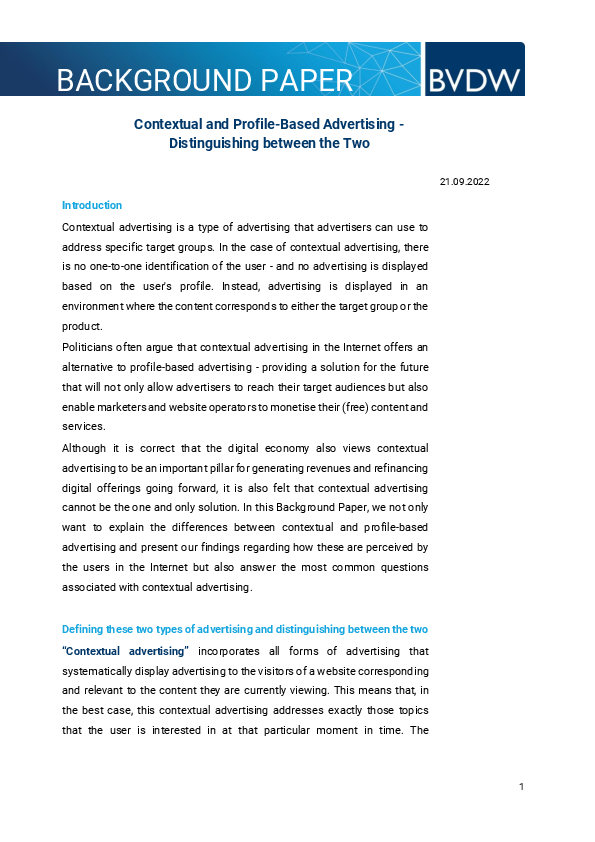Contextual advertising is a type of advertising that advertisers can use to address specific target groups. In the case of contextual advertising, there is no one-to-one identification of the user - and no advertising is displayed based on the user's profile. Instead, advertising is displayed in an environment where the content corresponds to either the target group or the product.
Politicians often argue that contextual advertising in the Internet offers an alternative to profile-based advertising - providing a solution for the future that will not only allow advertisers to reach their target audiences but also enable marketers and website operators to monetise their (free) content and services.
Although it is correct that the digital economy also views contextual advertising to be an important pillar for generating revenues and refinancing digital offerings going forward, it is also felt that contextual advertising cannot be the one and only solution. In this Background Paper, we not only want to explain the differences between contextual and profile-based advertising and present our findings regarding how these are perceived by the users in the Internet but also answer the most common questions associated with contextual advertising.
Die deutsche Version des Dokuments finden Sie hier.

